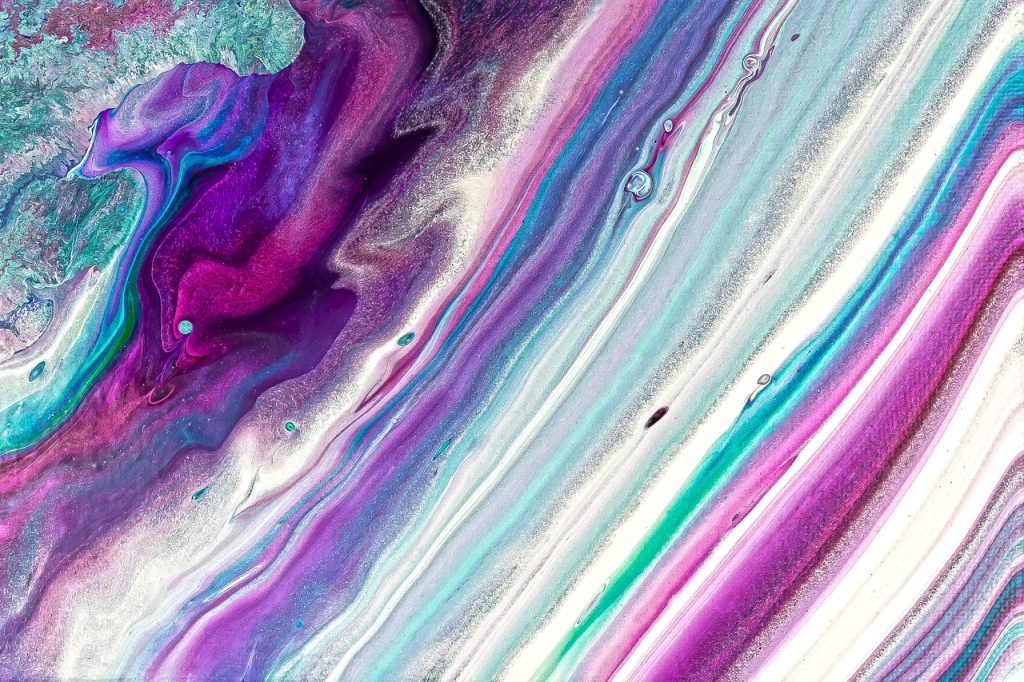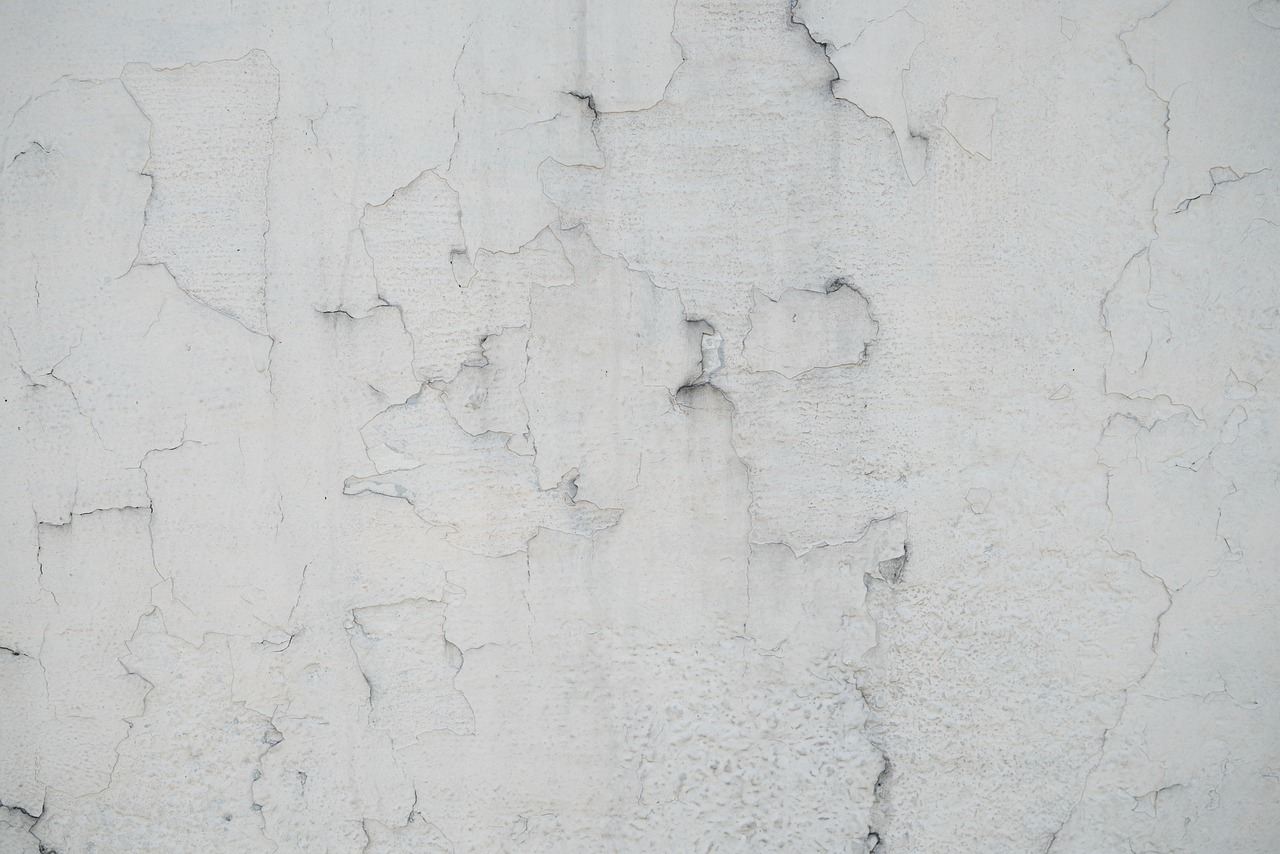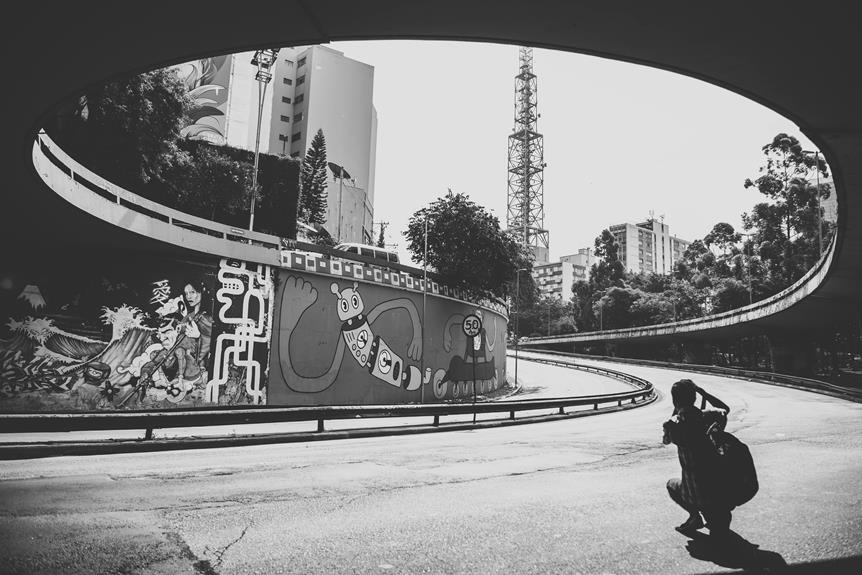Sarah Graham Art

Sarah Graham’s art captivates with its hyper-realistic details and vibrant colours.
Originating from Hitchin and honed through her BA in Fine Art from De Montfort University, her work showcases meticulous attention to intricate textures, making still-life subjects appear 3D-like.
Graham’s inspiration stems from nature, particularly insects and plants, imbuing her pieces with a surreal quality.
Her photorealistic Candy Series highlights her skill in transforming mundane objects into mesmerizing art, invoking nostalgia and childhood memories.
Utilizing oil on canvas, her deliberate brush strokes and focus on light and colour create powerful, emotive pieces.
Explore further to discover her enchanting world.
Key Points
- Sarah Graham is known for her hyper-realistic and vibrant colour palette art.
- Her notable works include the Photorealistic Candy Series, evoking nostalgia and childhood memories.
- Botanical inspirations are evident in her detailed ink-on-paper pieces featuring flora.
- Graham frequently uses oil on canvas, enhancing her art’s lifelike quality.
- She draws deep inspiration from nature, insects, and plant life in her creations.
Artistic Journey
Sarah Graham’s artistic journey began in Hitchin in 1977, blossoming through her education at De Montfort University, where she completed a BA (Hons) in Fine Art painting in 2000.
Her artistic evolution has been marked by a meticulous, creative process, influenced by vibrant colours and detailed depictions of natural forms.
You can observe how her work reflects a deep passion for nature, drawing inspiration from insects and plant life.
Graham’s travels and museum visits have enriched her creative palette, allowing her to magnify forms and infuse personal expression into her botanical subjects.
This evolution showcases her ability to transform ordinary elements into a world of wonder, illustrating her growth and dedication as an artist.
Signature Style
Capturing viewers’ attention with hyper-realistic details and a vibrant color palette, Graham’s signature style creates an immediate and mesmerizing visual impact.
Her meticulous attention to intricate textures gives her artworks a striking 3D-like effect, which greatly enhances their depth.
By exploring detailed still life subjects, Graham sets herself apart in contemporary art, combining an extraordinary level of detail with vivid, eye-catching colors.
Her art evokes wonderment and nostalgia, drawing from childhood memories and whimsical imagery.
Prioritizing aesthetics over deep intellectual meanings, Graham’s work emphasizes the sheer joy and beauty found in her colorful and detailed creations.
This approach not only captivates the viewer but also invites them to appreciate the simple yet profound pleasure in visual art.
Botanical Inspirations
You can see how Sarah Graham’s botanical inspirations manifest through her use of nature’s color palette and intricate floral design techniques.
Her ink on paper pieces, like ‘Meconopsis baileyi I,’ magnify natural details, transforming flora into evocative images.
This approach highlights her skill in blending graphic details with a surreal juxtaposition that brings the beauty and strangeness of nature to life.
Nature’s Color Palette
By magnifying botanical details in her artwork, Graham immerses viewers in a vibrant and surreal world that highlights nature’s intricate and evocative colour palette.
Her use of colour psychology and natural hues evokes emotional responses, drawing you into the depths of each piece.
Graham’s mastery of colour theory and artistic interpretations brings her subjects to life, making them both familiar and otherworldly.
| Artwork | Color Scheme | Emotional Impact |
|---|---|---|
| Meconopsis baileyi I | Blue, Green | Calming, Serene |
| Papaver orientale II | Red, Orange | Passionate, Energetic |
| Untitled Botanical Study | Purple, Pink | Creative, Dreamlike |
| Insect and Flora Series | Yellow, Brown | Warmth, Earthiness |
Graham’s precise ink on paper works are a reflection of nature’s vibrant spectrum, showcasing beauty and strangeness in equal measure.
Floral Design Techniques
Graham’s floral design techniques, characterized by their intricate details and vibrant colours, serve as a tribute to her deep appreciation for nature’s beauty and complexity.
She masterfully employs petal patterns and colour theory to bring her botanical subjects to life.
By magnifying these forms, she creates organic shapes that captivate the viewer’s imagination.
Her use of texture techniques enhances the tactile quality of each piece, inviting you to explore every nuance.
In works like ‘Meconopsis baileyi I’ and ‘Paeonia emodi I,’ Graham’s meticulous approach results in a surreal yet precise representation of flowers.
Each illustration reflects her deep connection to the plant world, transforming ordinary observations into extraordinary art.
Notable Works
You can’t overlook Sarah Graham’s Photorealistic Candy Series, which exemplifies her mastery in creating lifelike images.
Her vibrant colour palette not only captures attention but also adds a layer of depth and realism to her work.
Photorealistic Candy Series
Sarah Graham’s Photorealistic Candy Series stands out for its exceptional ability to transform everyday sweets into mesmerizing works of art, capturing the intricate details and vibrant colors with astounding precision.
Her paintings evoke sweet nostalgia, providing viewers with a visual indulgence that’s both comforting and enthralling.
Each piece showcases Graham’s meticulous technique, emphasizing the play of light on glossy surfaces to enhance the realism.
The hyper-realistic depictions of lollipops and candy wrappers invite you to appreciate the intersection of art and confectionery.
These works not only highlight her technical prowess but also tap into shared childhood memories, making them universally relatable.
Graham’s ability to evoke such powerful emotions through detailed artistry is truly remarkable.
Vibrant Color Palette
Through her notable works like ‘Pop Fizz’ and ‘Marble Galaxy,’ Sarah Graham’s vibrant colour palette and intricate details produce a mesmerizing visual experience.
Her use of colour psychology profoundly impacts viewers’ emotions, evoking joy and wonderment. Graham’s paintings, such as ‘Pop Duo 2,’ employ vivid hues and detailed textures to create a hyper-realistic, almost 3D-like effect.
This aligns her with contemporary trends in abstract expressionism, where bold colours and dynamic compositions are key elements.
Pieces like ‘You Fancy Me’ and ‘I Fancy You’ not only highlight her technical prowess but also her ability to capture the essence of childhood memories.
By focusing on vibrant colours, Graham ensures her art leaves a lasting emotional imprint on her audience.
Technique and Medium
Frequently employing oil on canvas, the hyper-realistic technique in Sarah Graham’s artwork captivates viewers with its vibrant colors and intricate details. Her oil painting method showcases precise brush strokes that enhance the lifelike quality of her pieces.
Graham’s meticulous attention to light and colour creates a 3D-like effect, making her still-life subjects appear almost tangible. By focusing on aesthetics, she brings childhood memories to life, using imagery of sweets and toys to evoke wonder and nostalgia.
Each brush stroke is deliberate, contributing to the overall visual impact and emotional resonance of her work. Graham’s technique prioritizes visual appeal, ensuring that her art captivates and delights without necessitating a deeper meaning.
Exhibitions and Recognition
Often celebrated for her intricate botanical drawings and surreal compositions, Graham’s solo exhibitions in major cities like London, New York, and Aspen have solidified her reputation in the contemporary art world.
Her global recognition is further bolstered by artistic partnerships and participation in prestigious art fairs, where her unique approach to magnifying natural forms captivates audiences.
Graham’s works have earned her prestigious awards and features in renowned galleries worldwide. These accolades have highlighted her influence and expanded her reach.
The release of her first monograph, coinciding with a show at the Lyndsey Ingram gallery, underscores her growing prominence.
These exhibitions not only showcase her talent but also affirm her status as a significant contemporary artist.
Frequently Asked Questions
What Is Sarah Graham’s Most Famous Painting?
Sarah Graham’s most famous painting, ‘Marble Galaxy,’ has captivated audiences in famous exhibitions. The piece showcases her signature elements of vibrant colour, intricate detail, and a mesmerizing 3D-like effect, making it a standout in her collection.
What Techniques Does Sarah Graham Use?
You’ll notice hyper realism techniques in her work, especially the photorealistic details that give a 3D-like effect. By focusing on intricate textures and vibrant colours, she brings her botanical subjects to life with stunning accuracy.
What Is Sarah Graham Artist Life?
You’d find Sarah Graham’s artistic influences rooted in childhood wonders, sweet things, and toys. Her early exhibitions in major cities like London established her reputation, showcasing hyper-realistic, vibrant paintings that evoke nostalgia and delight in viewers.
What Colors Does Sarah Graham Use?
You’ll find that vibrant, bold colour symbolism and diverse palette inspiration define her work. She uses rich, saturated hues, candy-like pastels, and deep tones to evoke joy and nostalgia and enhance realism, creating immersive, dynamic compositions.
Conclusion
In exploring Sarah Graham’s artistic journey, you’ve witnessed her evolution into a master of botanical art. Her signature style, characterized by vibrant colours and meticulous detail, captivates audiences.
Drawing inspiration from nature, her notable works stand as proofs to her skill and vision.
Through her unique technique and medium, she breathes life into her subjects, earning well-deserved recognition in numerous exhibitions.
Graham’s art continues to inspire and engage, reflecting her profound connection to the natural world.
Author: Rupert Ulrich

